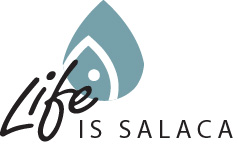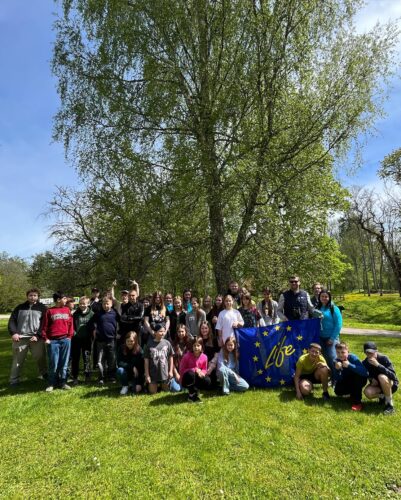To celebrate Natura 2000 Day, students of 5th and 7th grade of Mazsalaca Secondary School took part in an educational…
The National Scientific Institute hosted a discussion on “Heavy machinery in the river – challenges, benefits (and losses?) in cleaning and restoring watercourses”, aimed at finding the best solutions for maintaining the river flow using heavy machinery to boost salmonid populations in the Salaca.
The Salaca is a national salmon river and no farmed juvenile salmon are allowed into the river. Salmon populations in the Salaca only develop naturally, so the area and quality of habitat suitable for salmon spawning, which has been reduced by overgrowing of the river bed, is of great importance.
Experts from the field and public authorities and non-governmental organisations involved in river management were invited to the discussion to work together to find solutions on how to more effectively restore the river bed, reduce siltation and improve the quality of fish habitats.
Participants agreed that river restoration is an important prerequisite for improving the ecological quality of rivers, but that it needs to be scientifically sound to achieve the best possible results.
Human activities have contributed to the overgrowth of rivers, both by discharging untreated waste water into rivers and by allowing sediment and nutrients to run off from agricultural land. The first experience of river restoration was gained more than 30 years ago in Lielupe, Mousa and Mēmelis, where the riverbed was cleaned with tractors.
The use of heavy machinery has proved its effectiveness, but it should be borne in mind that its use can also have adverse effects on both aquatic organisms and protected habitats. Improper use of the technique can degrade the river ecosystem, while fish and other organisms may take years to recover.
A review of the experience of all stakeholders involved in river management, both within and outside the EU, has shown that in order to achieve the best possible results in restoring rivers and enhancing the quality of fish habitats, it is important to do so in a targeted and planned way. As BIOR researcher Kaspars Abersons pointed out, “River restoration measures are necessary, but they need to be carefully planned, and monitoring is needed after the work to assess the actual benefits”.
The experience and knowledge of the researchers and other experts involved, as well as the information gathered on good practice examples, will be used to implement effective and sustainable restoration of the Salaca River within the LIFE IS SALACA project.
Representatives of both non-governmental organisations and governmental institutions, who have already implemented restoration measures in the Salaca, Lielupe, Musa, Memele, Gauja and Venta rivers, took part in the discussion and shared their practical experience.






